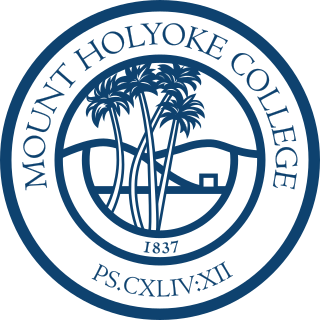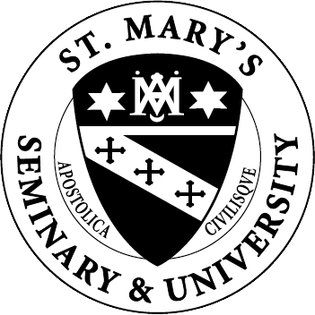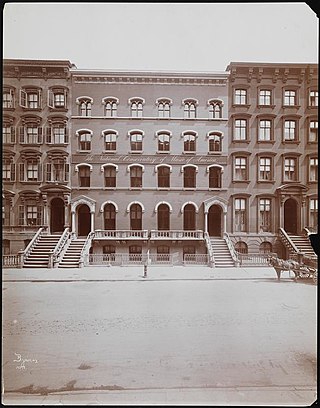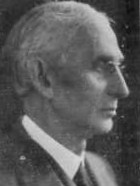
Mount Holyoke College is a private women's liberal arts college in South Hadley, Massachusetts, United States. It is the oldest member of the historic Seven Sisters colleges, a group of historically female colleges in the Northeastern United States. The college was founded in 1837 as the Mount Holyoke Female Seminary by Mary Lyon, a pioneer in education for women. Mount Holyoke is part of the Five College Consortium in Western Massachusetts.

Creal Springs is a city in Williamson County, Illinois, United States. The population was 543 at the 2010 census.
Shimer Great Books School is a Great Books college that is part of North Central College in Naperville, Illinois. Prior to 2017, Shimer was an independent, accredited college on the south side of Chicago, originally founded in 1853.

Mary Mason Lyon was an American pioneer in women's education. She established the Wheaton Female Seminary in Norton, Massachusetts, in 1834. She then established Mount Holyoke Female Seminary in South Hadley, Massachusetts, in 1837 and served as its first president for 12 years. Lyon's vision fused intellectual challenge and moral purpose. She valued socioeconomic diversity and endeavored to make the seminary affordable for students of modest means.

Jeannette Thurber was amongst the first major patrons of classical music in the United States. Thurber established the National Conservatory of Music of America in 1885—the first of its kind and an endeavor that some say ushered in the first orchestral music with a distinctively American sound. But in a very radical stance for the day, Thurber championed the rights of women, people of color and the handicapped to attend her school, sometimes on full scholarship. This was 1885—two decades since the end of the American Civil War—and her school was racially integrated, promoted women, and had an inclusive stance toward the handicapped.

St. Mary's Seminary and University is a Catholic seminary located within the Archdiocese of Baltimore in Baltimore, Maryland; it was the first seminary founded in the United States after the Revolution and has been run since its founding by the Society of the Priests of Saint Sulpice.
The Mount Vernon Seminary and College was a private women's college in Washington, D.C. It was purchased by George Washington University in 1999, and became the Mount Vernon Campus of The George Washington University.
The American Conservatory of Music (ACM) was a major American school of music founded in Chicago in 1886 by John James Hattstaedt (1851–1931). The conservatory was incorporated as an Illinois non-profit corporation. It developed the Conservatory Symphony Orchestra and had numerous student recitals. The oldest private degree-granting music school in the Midwestern United States, it was located in Chicago until 1991.

Concordia University Chicago is a private university in River Forest, Illinois. Formerly a college exclusively for parochial teacher education, Concordia-Chicago now offers more than 100 undergraduate and postgraduate degrees and enrolls more than 5,000 students. The university is a member of the Concordia University System, a nationwide network of colleges and universities affiliated with the Lutheran Church–Missouri Synod (LCMS).

The National Conservatory of Music of America was an institution for higher education in music founded in 1885 in New York City by Jeannette Meyers Thurber. The conservatory was officially declared defunct by the state of New York in 1952, although for all practical pedagogical purposes, it had ceased to function much earlier than that. Between its founding and about 1920, however, the conservatory played an important part in the education and training of musicians in the United States, and for decades Thurber attempted to turn it into a federally-supported national conservatory in a European style. A number of prominent names are associated with the institution, including that of Victor Herbert and Antonín Dvořák, director of the conservatory from September 27, 1892 to 1895.

The University of North Texas College of Music, based in Denton, is a comprehensive music school among the largest enrollment of any music institution accredited by the National Association of Schools of Music. It developed the first jazz studies program in the nation, and it remains one of the top schools for jazz. As one of thirteen colleges and schools at the University of North Texas, it has been among the largest music institutions of higher learning in North America since the 1940s. North Texas has been a member of the National Association of Schools of Music for 86 years. Since the 1970s, approximately one-third of all North Texas music students have been enrolled at the graduate level. Music at North Texas dates back to the founding of the university in 1890 when Eliza Jane McKissack, its founding director, structured it as a conservatory.

The Bush Temple Conservatory of Music and Dramatic Art was an American conservatory of music based in Chicago with branches in Dallas and Memphis.

Shimer College was founded in 1852, when the pioneer town of Mt. Carroll, Illinois, lacking a public school, incorporated the Mt. Carroll Seminary with no land, no teachers, and no money for this purpose.
Illinois State University was a private institution of higher learning in Springfield, Illinois. It began as The Literary and Theological Institute of the Lutheran Church in the Far West in Hillsboro, Illinois, in 1847. It soon became known as the Lutheran College, and, locally, as Hillsboro College. In 1852, it relocated to Springfield and changed its name to Illinois State University. It ceased operations in 1868, but reopened as Carthage College in Carthage, Illinois, in 1870.

Frances Shimer, born Frances Ann Wood, was an American educator. She was the founder of the Mount Carroll Seminary, which later became Shimer College, in Mount Carroll, Illinois. She was also the sole proprietress of the school from 1870 to her retirement in 1896.

William Parker McKee (1862–1933) was an American educator and Baptist minister. He served as the chief executive of Shimer College from 1897 to 1930, a position known at the time as "Dean". During this period the school was known by turns as the Frances Shimer Academy, Frances Shimer School, and Frances Shimer Junior College. The second executive of the college following its founder Frances Shimer, Dean McKee was also the second longest-serving executive in Shimer's history. He oversaw the rebuilding of the campus following the fire of 1906, and the commencement of the junior college program shortly thereafter.
The Mount Carroll Seminary was the name of Shimer College from 1853 to 1896. The Seminary was located in Mount Carroll, Illinois, in the United States. A pioneering institution in its time and place, the Mount Carroll Seminary served as a center of culture and education in 19th-century northwestern Illinois. Despite frequent prognostications of failure, it grew from 11 students in a single room to more than 100 students on a spacious campus with four principal buildings. Unusually for the time, the school was governed entirely by women, most notably the founder Frances Wood Shimer, who was the chief administrator throughout the Seminary's entire existence.

Bina Deneen (1868–1950), born Bina Maloney, was the first two-term first lady of Illinois, and the first to give birth in the Illinois Executive Mansion. She was the wife of Charles S. Deneen. Known at the time as "the ideal wife for a governor" for her calm and unassuming style, she was also an active participant in her husband's campaigns, and in the woman's club movement.

The College of Music of Cincinnati, also known as the Cincinnati College of Music, was an American music school in Cincinnati, Ohio. It was established in 1878 by George Ward Nichols with the financial help of Reuben R. Springer. It merged with the Cincinnati Conservatory of Music in 1955, forming the Cincinnati College-Conservatory of Music.













